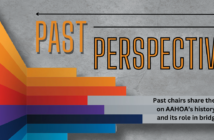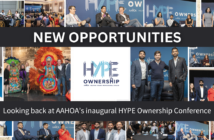by Hawley Kane
Organizations across a wide swath of industries are changing the way they think about learning. As the approach to modern talent development evolves, the hotel industry also is asking insightful questions about learning and development changes they can implement. After all, learning touches directly on your brand ambassadors – the quality of your frontline staff and the services they provide, which of course directly impact the bottom line.
Today’s learning involves more than checking a compliance box. To truly succeed in attracting, developing, and retaining competent, enthusiastic, and accountable employees, a modern talent development approach is required.
The payoff for introducing a modern talent development approach to your organization is that engaged and motivated employees deliver a great customer experience for your guests. Here are three key areas to consider when updating a learning and development strategy for your modern workforce.
#1 When rethinking your learning and development strategy, ask these questions:
When was the last time you considered your employee’s experience?
We’re not talking about if the learning platform was easy to access or whether or not the employee fills out an employee satisfaction survey. What we’re looking for is the experience the employee had while working for your company. An exceptional employee experience increases brand loyalty and retention.
Jacob Morgan, author of “The Employee Experience Advantage,” says the three environments that make up the employee experience are culture, physical spaces, and technology and tools. Culture is all about how an employee feels about working for an organization. Examples of success would be a manager who acts as a coach, competitive pay and compensation, and positive brand perception. Physical spaces are the actual spaces where your colleagues work. Examples of success include flexibility, autonomy, and having multiple floor plans that employees can pick from. Lastly, technology and tools looks at the tools employees use to get their jobs done. A successful example here is adoption of the tools your company provides. Bonus points if they are user friendly!
Have you linked learning to performance?
Powerful results happen when learning objectives are linked to employee performance. In IDC’s 2017 InfoBrief, Best Practices in Learning and Development of High Performing Companies, learning organizations saw:
- 20-percent greater executive commitment to training
- 10-percent higher manager support of the training
- 32-percent greater gain in employee performance
- 38-percent improved employee productivity
The Brandon Hall Group’s 2018 Learning Strategy Survey found that 78.4 percent of learning organizations have identified “Aligning the learning strategy with the business” as a critical priority in 2018. If you want to increase performance, stay competitive, and improve employee engagement, link learning to your business strategy.
#2 When rethinking your learning and development strategy, design learning content with the end user in mind
When InterContinental Hotels Group leaders were redeveloping their learning strategy, they paused to consider the end user. “You have to win hearts, minds and hands, and not just your team, but the many stakeholders in your organization,” says Gary Whitney, Vice President, Global Learning, InterContinental Hotels Group.
In China, for example, the IHG culture is very mobile friendly, so any learning for employees there had to take place on mobile devices, not desktops. Housekeepers in most countries spend very little time on devices during the workday, so learning needs to meet them where they are and appeal to how they learn and connect with the organization.
#3 When rethinking your learning and development strategy, strive for employee engagement
Any new talent development strategy should include a focus on employee engagement. An engaged employee has an emotional commitment to their daily work. They are eager to go to work, interact with co-workers, and contribute in a manner they feel will be valued and helpful to the organization.
Gallup Research found that companies with engaged workers have 20-percent higher sales. Engagement also can reduce turnover, lower absenteeism, prevent shrinkage, encourage fewer safety incidents, improve customer ratings, and lead to higher productivity.
When Hyatt asked its 100,000-member global workforce what they needed in learning and development, they heard that learning needed to be easy to access, easy to use, and quick to consume. Considering how your people learn will have the end result of developing engaged employees who are passionate and loyal to the company.
DRIVING BUSINESS RESULTS WITH LEARNING
To really tap into the benefits of an engaged workforce, your employees must see the connection between what they do, their value to the company, and their impact on organizational results. So, make sure they have a clear grasp on the company’s purpose and what their role is in supporting it.
Creating a refreshed and modern learning and development strategy takes a lot of hard work, but it’s worth it. Gone are the days when learning was a dusty manual or an all-day seminar held offsite. Your frontline employees (and everyone else!) can benefit from a modern talent environment with stellar employee experiences, learning that’s linked to performance, and content that’s designed with the employee in mind. When all is said and done, you’ll create engaged employees ready to wow your customers – and that leads to improved business results every time.
Hawley Kane is head of Organizational Talent and Leadership Development at Saba Software. As the OD leader at a talent management provider, she has the unique opportunity to marry Saba’s ongoing performance, continuous learning, and career development strategies with the company’s own cloud solutions and services. Hawley is responsible for global initiatives ranging from onboarding to performance management training and leader development, as well as Saba’s people- and team-driven development programs. Before her L&D leadership role, Hawley served as principal product manager at Halogen Software, prior to the company’s acquisition by Saba in 2017. Nearly a decade of experience in working with hundreds of HR and learning leaders to translate their business and user needs into product capabilities has provided her with distinctive insight into her current role.




